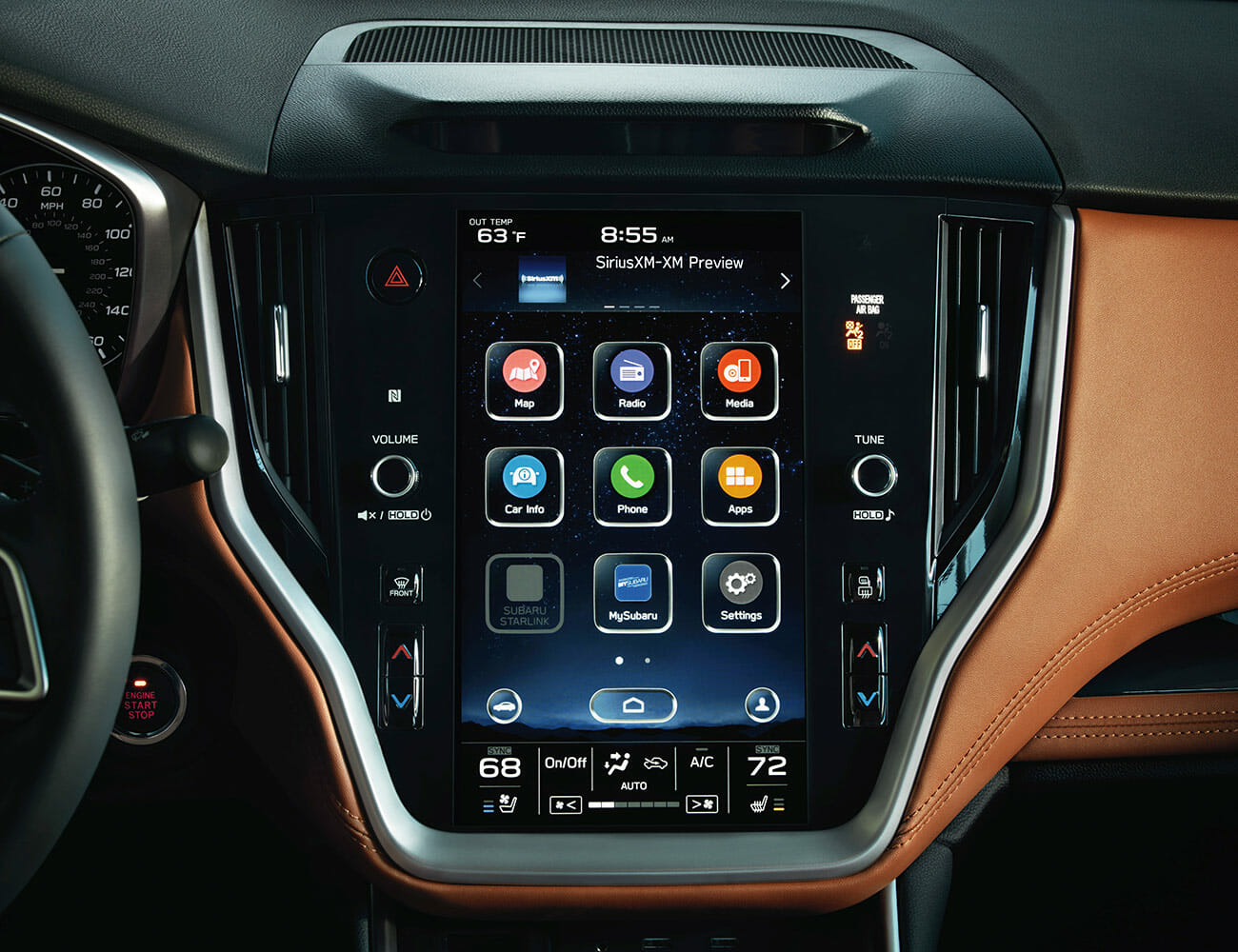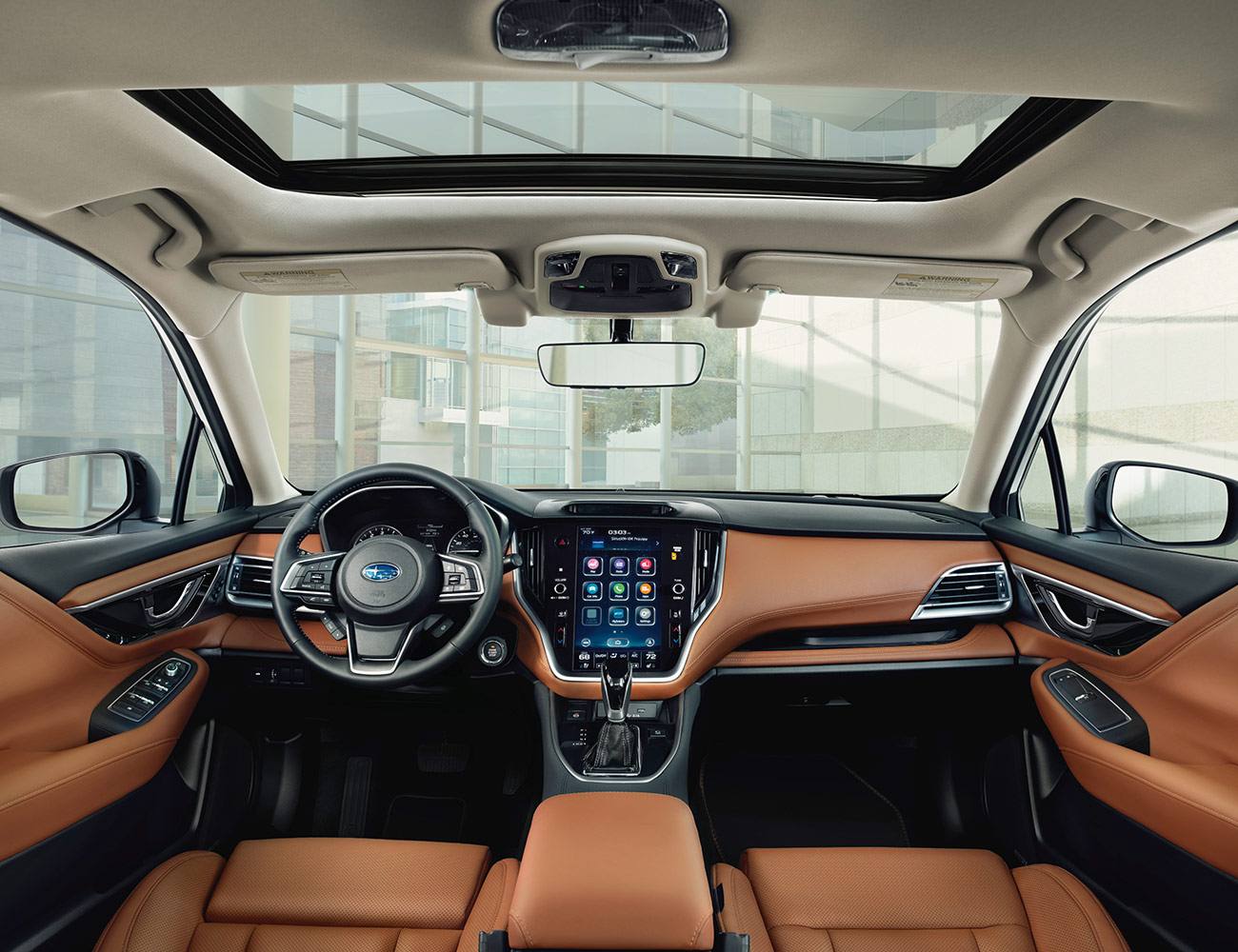The unchanging nature of Subarus, manifested in their stubbornly utilitarian designs, has been part of the brand’s enduring charm. But that homespun quality isn’t at all charming when it comes to infotainment: Subaru’s systems have, at times, recalled Amish buggies in a world of modern automobiles.
That all changes with the 2020 Legacy sedan and Outback crossover. In a rare worst-to-first scenario, these latest Subarus have gone all Tesla, with a tablet-style infotainment unit that out-styles and outperforms virtually any mainstream competitor.
Driving the all-new Legacy in Ojai, California, I was quickly won over by the Starlink multimedia system and its vertically-oriented 11.6-inch screen. The high-definition screen’s huge real estate and handsome, info-rich navigation graphics — the latter courtesy of TomTom — made it a breeze to stay on course. Drivers can instantly rejigger key icons on the screen, as with any smartphone. Electromagnetic near-field communication allows you to pair Android phones simply by touching them to the unit’s NFC scanner, with no Bluetooth link or time-wasting configuration required.
The split-screen display is another first in a Subaru. The system, developed with Japanese supplier Denso, gets its own dedicated processor, with a separate processor for HVAC and other controls. And it all worked flawlessly: No hiccups, no headaches, no digging for the owner’s manual. It’s a whirlwind change from previous Subarus, whose tinny audio systems, scrawny displays and scrawnier buttons recalled the aftermarket stereos that enterprising sorts once sold out of the back of an airbrushed van.
“Historically, we got dinged for our head units,” says Charles Ballard, Subaru’s product and technology specialist. “The big goal was to get them up to speed, with something that’s fast and intuitive like your phone.”
The system also avoids too-radical changes that might upset Subie loyalists. You’ll still find trusty analog knobs and buttons for functions like volume, radio tuning and onboard temperature. In doing so, Subaru heeded the advice of New Englanders and other customers in wintry climes, who wear gloves in cars and prefer a few traditional knobs to onscreen controls.
This being Subaru, the system also offers apps that should appeal to the brand’s oh-so-outdoorsy demographic. The National Parks app, created by Chimani, brings detailed info on all 59 of America’s parkland treasures. eBird, developed in partnership with the Cornell Lab of Ornithology, is a crowd-sourced bird watching app, which lets users track species and the locations where they’ve been spotted.
For its part, these Subaru species may continue to be spotted most often in the wilds of New England or the Pacific Northwest. But wherever you drive these Subarus, the Starlink system offers ongoing proof of automotive evolution.



